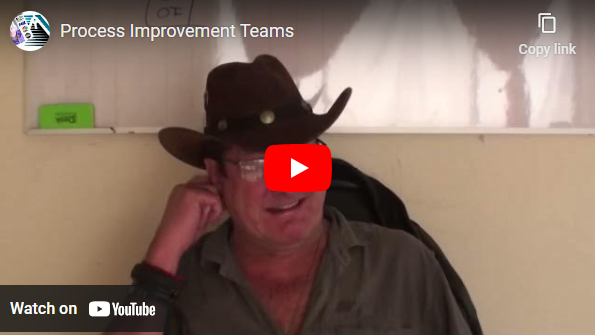Process Improvement Teams
Most of the time career project managers are always juggling projects and everyone asks you about their fucking project just like when they know you fix computers. However, sometimes things slow down, so then what? Project managers (PMs), known for their ability to manage teams, timelines, and resources, are critical to the success of these initiatives. However, once a project is completed, these highly skilled professionals can often find themselves in limbo, waiting for the next project to begin. This downtime presents an excellent opportunity for organizations to make the most of their project managers by assigning them to lead process improvement teams.
Here’s how using PMs between projects to form and lead process improvement teams can significantly benefit both the organization and the project managers themselves.
Tapping into Unique Skill Sets
Project managers possess a unique blend of skills that make them ideal candidates to lead process improvement efforts. They have extensive experience with identifying risks, managing cross-functional teams, and optimizing resources. Additionally, they often have a deep understanding of both the operational and strategic aspects of the business due to their involvement in various projects.
Process improvement initiatives require a structured approach to identifying inefficiencies and streamlining operations. Project managers, with their expertise in setting clear objectives, are naturally suited to lead these initiatives. Whether it’s mapping workflows, conducting root cause analysis, or facilitating brainstorming sessions, a PM’s toolkit aligns perfectly with the demands of process improvement. We know how to get shit done.
Keeping Project Managers Engaged and Developing
Periods of inactivity can lead to skill atrophy and demotivation because PMs are usually ADHD. We get bored. Allowing project managers to lead process improvement teams between projects helps them remain engaged and challenged. This opportunity can also serve as an avenue for professional development. This allows PMs to deepen their understanding of operational processes, stakeholder management, and change management that are all critical to future project success.
By staying involved in continuous improvement activities, project managers not only enhance their existing skillsets but also learn new methods of efficiency that can be applied to future projects. This means that don’t stay in the bar or end up in rehab. This creates a cycle of continuous learning, where PMs bring fresh insights to the table with every new project they lead.
Improving Organizational Efficiency
Process improvement initiatives focus on identifying and eliminating bottlenecks, waste, and inefficiencies within the organization. By assigning project managers to these initiatives, businesses can ensure that process improvements are not only designed but also executed.
One of the key strengths of project managers is their ability to coordinate resources and align teams toward a common goal. This is essential when improving processes, as multiple departments and stakeholders are often involved. A PM’s cross-functional expertise ensures that improvement efforts are comprehensive and sustainable.
Moreover, PMs are accustomed to dealing with both short-term wins and long-term strategic goals. This dual focus allows them to prioritize improvements that deliver quick results while setting the stage for deeper, more significant changes over time.
Cost-Efficiency and Better ROI
In many organizations, project managers are seen as resources tied to specific projects. When those projects end, PMs might remain underutilized until the next project begins. This can be costly for the organization in terms of both salary and lost potential.
By integrating PMs into process improvement teams, organizations can ensure a better return on investment (ROI). Instead of being a cost center between projects, project managers can actively contribute to improving the organization’s bottom line.
A Culture of Continuous Improvement
Finally, leveraging project managers to lead process improvement teams between projects fosters a culture of continuous improvement. This culture is crucial for organizations aiming to stay agile and competitive. That is agile in a good way. Not that other shit. It ensures that every aspect of the business is regularly evaluated and optimized, reducing waste and ultimately enhancing the customer experience.
Conclusion
Using project managers between projects to lead process improvement teams is a strategic move that benefits both the organization and the PMs themselves. Organizations can harness the skills of their PMs to drive meaningful, lasting change, while project managers remain engaged and continue to add value. This approach not only leads to better project outcomes in the future but also fosters a culture of continuous improvement that can keep businesses competitive in the long term.
Let’s Git-R-Done this week!

